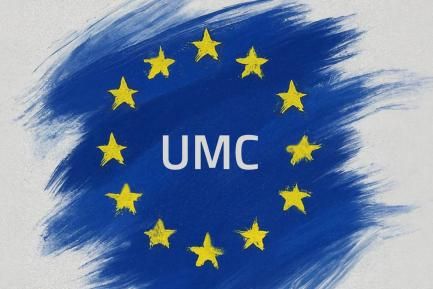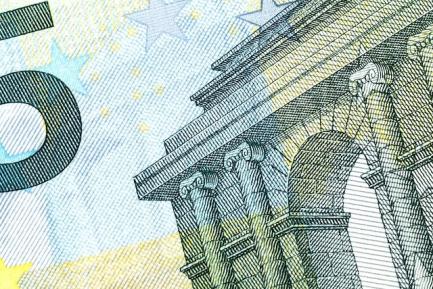The dividends of integrating emerging Europe within the EU
Meeting in Copenhagen in 2002, the heads of government of the 15 EU states and 10 candidate countries agreed that EU enlargement would become a reality on 1 May 2004.1 This was a time of celebration and maxims of supposedly great import on the part of all those attending. But perhaps Siim Kallas, the Estonian Prime Minister, best expressed the aspirations of emerging Europe. He said that Europe was a new place of opportunity for future member states because it would help them to attract investment, sell their products and travel and work in Europe. The pragmatic nature of his words may lack ambition (Kallas was essentially satisfied with access to a large domestic market). Nevertheless, a quick glimpse at history shows quite the opposite: joining the EU offered something that, for much of the 20th century, had been out of reach for the eastern half of the European continent.
There are four key moments in the history of this region. In 1937, Czechoslovakia’s per capita income was 72% that of Western Europe, Hungary 63%, Poland 48%, Bulgaria 39% and Romania 28%. 1992: shortly after the collapse of the USSR and the fall of the Berlin Wall. After nearly five decades of a planned economy, the region’s ranking in wealth terms had not altered. In fact, it had moved even further away from the continent’s advanced states. 2004: after a decade of transition to a market economy, enlargement took place. The situation? The same ranking and almost identical levels of relative wealth as in 1937. And finally, 2016. After a calamitous century, the longed-for real convergence has finally begun to appear. Since joining the EU, the abovementioned countries have been able to cut their income gap by between 9 and 24 pp, depending on the case.
This success (greater in some countries than in others) is mainly due to a combination of two factors: the connection of these economies to the EU’s solid core and the modernisation of their institutions. The effect of economic integration is clearly positive. Since 1995, when preparations to join the EU began, the ratio of exports plus imports with the euro area as a percentage of GDP has risen from 29.2% to 55.9% today. Poland, Hungary, the Czech Republic and Slovakia have been particularly successful, more than doubling the intensity of their trade with the euro area. Another key area is foreign direct investment (FDI). In the aforementioned period, emerging Europe received the equivalent of 4% of GDP annually, a significant figure considering that, between 1986 and 1997 (the same length of time since it joined the EU), Spain’s inflows of FDI were equivalent to 2.2% of GDP. The rate has diminished since 2007 but we will discuss this trend later on. A third aspect that reveals the high degree of integration is the flow of people. In a demographically static region, gross emigration has been considerable. Poland has contributed the most to this trend, with 1.8% of its population emigrating between 1995 and 2015.
The second key to success for emerging Europe is institutional modernisation. This can be gauged using the World Bank’s Indicators of Regulatory Governance, which measure whether regulation and government policies are conducive to private business. According to this index, whereas in 1996 the region’s regulatory quality was similar to that of Argentina at the time, in 2016 it was equivalent to Portugal’s current status. This is a markedly positive development. But it is also true that progress has been slow since the mid-2000s. Going back to the aforementioned issue of foreign investment, although inflows have continued their rate is now slower. There are many different reasons for this and not all of them can be put down to the idiosyncrasy of the emerging countries, but the lack of institutional improvement is nevertheless a burden.
It is therefore reasonable to conclude that emerging Europe has benefitted from joining the EU. The evidence confirms this but it also confirms that this beneficial effect is fading and the growth pattern changing. As pointed out in the article «Analysis of the emerging European economic cycle» in this Dossier, since 2009 the region has been moving towards what is sometimes called an extensive growth model; i.e. more focused on accumulating factors of production than increasing productivity. To move back towards a model of intensive growth, the countries of emerging Europe will have to rethink their expectations of the EU and what they can contribute to its construction. They will also have to improve their infrastructures and embark once more on institutional improvements. The relationship between the EU and emerging Europe will be decisive in both cases, although here we will focus more on the former.
Emerging Europe is relatively less wealthy than the EU average. It has therefore tended to receive various EU funds and transfers to finance structural change. This change has essentially taken place by developing regions, providing infrastructures and modernising agriculture. As an annual average, since 2004 emerging Europe has received net transfers from the EU budget equivalent to 2.2% of GDP (in the same period Spain has received the equivalent to 0.3% of GDP). Irrespective of whether this EU aid has been used efficiently, such a large amount suggests the region’s transformation has been greater thanks to these funds.
There is, however, a paradox. Due to the eligibility conditions for such funds, the more prosperous a country is, the fewer funds it receives. Emerging Europe therefore needs to discuss, and in depth, how to adjust regional policy and other structure-related funds as from 2020, when the current financial programming period comes to an end. But its influence on this discussion will also depend on whether its EU partners believe emerging Europe is helping to construct the European project. Recent relations between some emerging European countries and the EU are not very encouraging. In addition to the misunderstandings discussed in the article «Political risk in emerging Europe: how much should we be concerned?» in this Dossier, there are other indications of estrangement, such as the lukewarm response by some countries to them theoretically joining the euro. There is currently a window of opportunity (and certainly a need) to rekindle European integration, especially in the area of monetary integration. Such an attitude may therefore be a strategic error.2 Emerging Europe should realise that the EU still offers considerable opportunities for the eastern half of the continent.
We have already mentioned a second aspect that needs to be changed in the region’s growth model; namely institutional improvement, sometimes referred to as second-generation reforms. If joining the EU can act as an incentive to create a modern institutional framework, then surely we can find ways to ensure the progress of the EU and of emerging Europe’s institutions goes hand in hand. In short, emerging Europe’s hard work allowed it to benefit from an obvious economic dividend from integration over the past 20 years. Surely countries that are no longer the same as they were decades ago should now invest decisively in political capital and obtain, in fair exchange, the political benefits of integration. Or, to paraphrase John F. Kennedy, they should not ask what the EU can do for them but what they can do for the EU.
Àlex Ruiz
Macroeconomics Unit, Strategic Planning and Research Department, CaixaBank
1. In this article, emerging Europe refers to the following countries: Poland, Czech Republic, Slovakia, Slovenia, Hungary, Latvia, Lithuania, Estonia, Romania, Bulgaria and Croatia. The first eight joined the EU in 2004, Romania and Bulgaria in 2007 and Croatia in 2013.
2. On this issue, see Mestres, J. and Ruiz, À. (2017), «The European Union: the keys to a rebirth», in MR09/2017.



